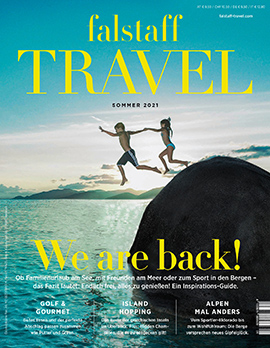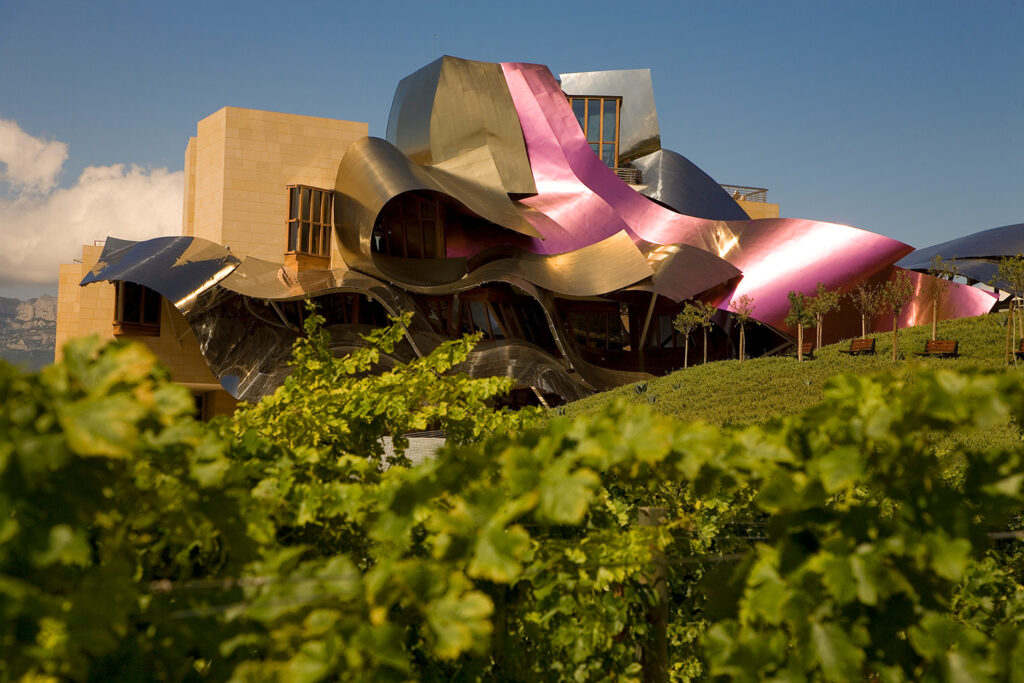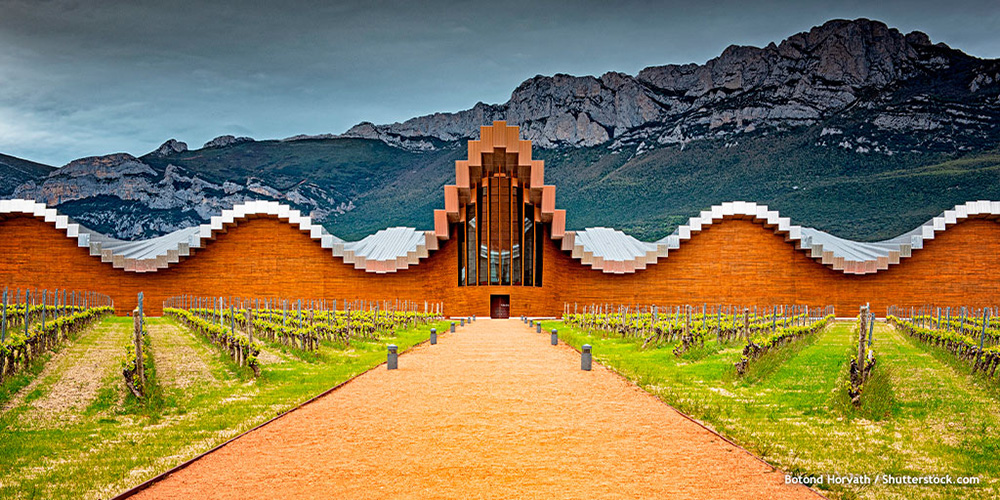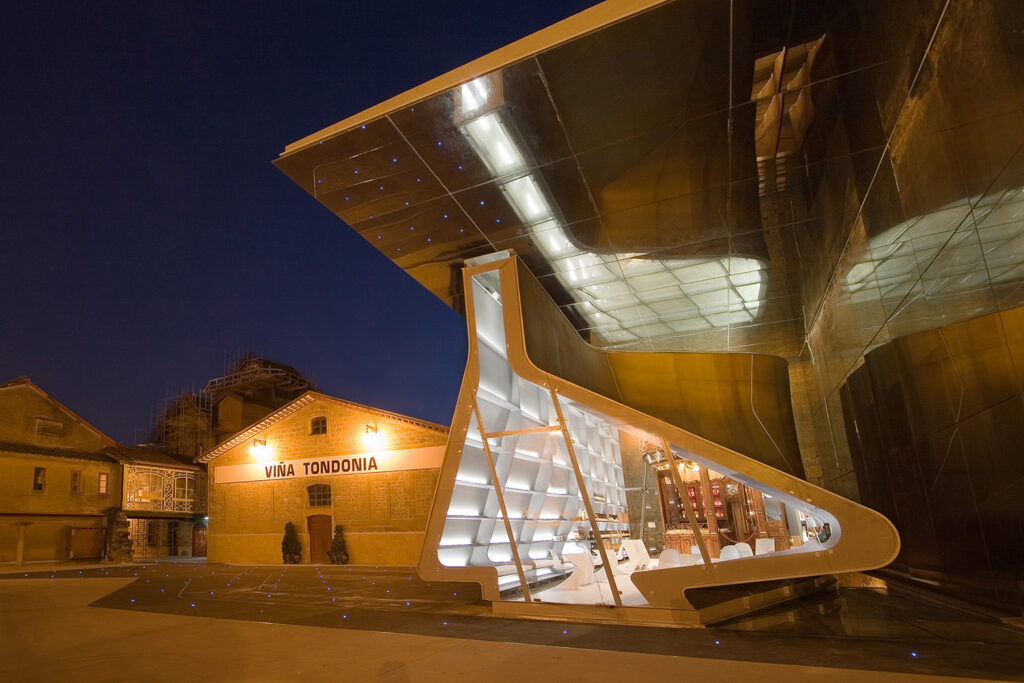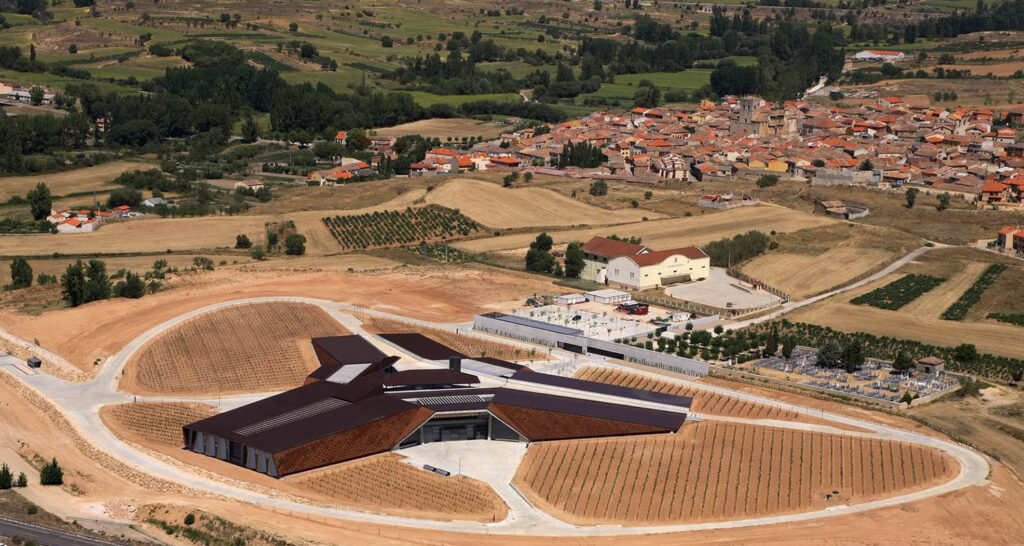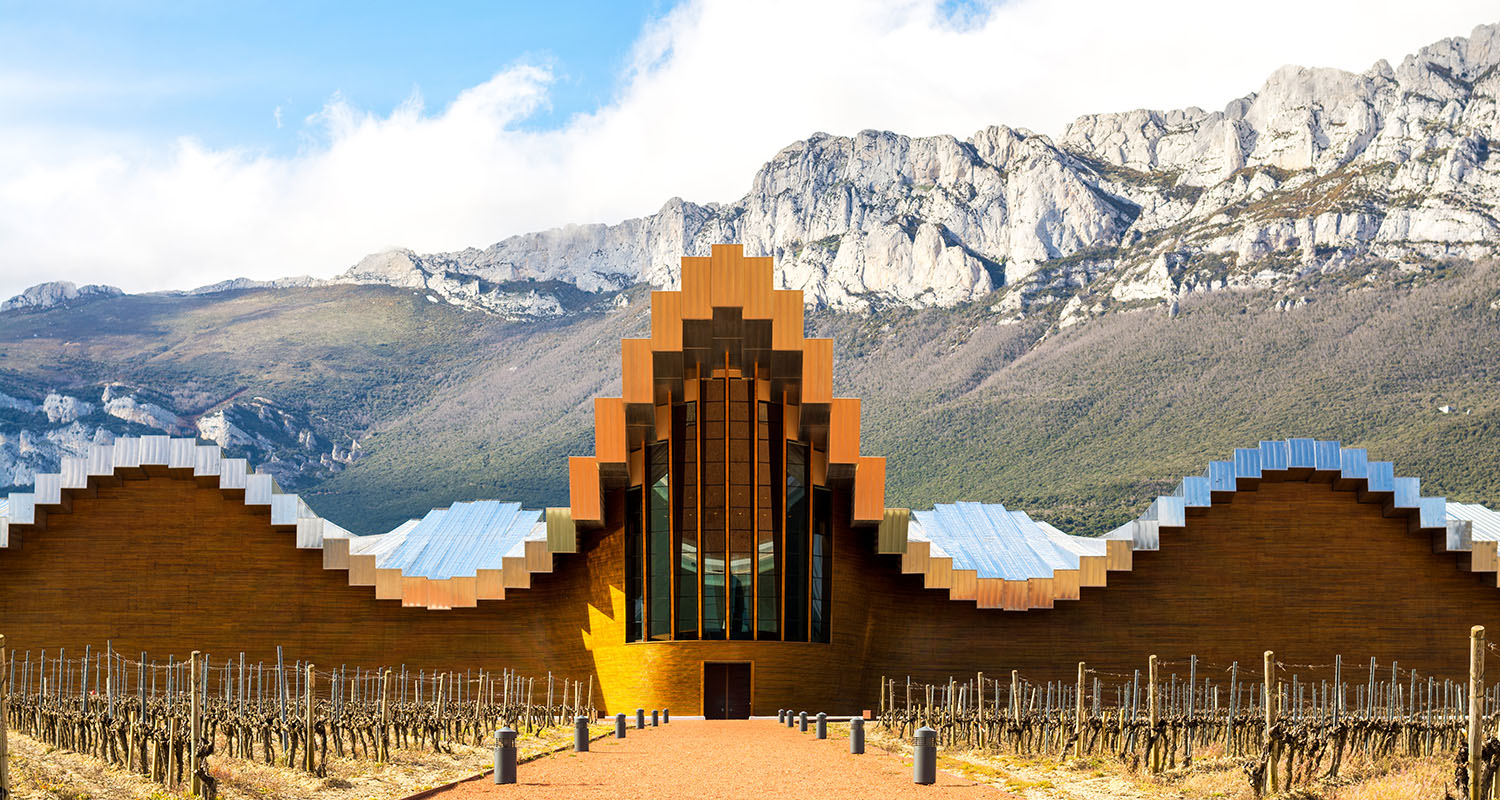
Enjoy with all senses: Spain and its bodegas
In addition to beaches and the sea, Spain also offers numerous attractions in the inland of the country. Modern bodegas that combine wine enjoyment with design offer a unique insight into the country's wine culture.
January 18, 2022
Spain is not only known for Barcelona and the Balearic Islands, but also for its numerous vineyards and bodegas. Over 900,000 hectares of vineyards and 4,300 wineries provide enjoyment at the highest level. From the famous Rioja to Rueda or Ribera del Duero - the wide range of wine varieties delights connoisseurs. Travelers with an affinity for pleasure can look forward to the wine routes and taste themselves through different wineries while marveling at the endless vineyards, or visit the modern and unique bodegas that combine functionality with exceptional design. These 5 bodegas are distinguished by their special appearance and entice you to enjoy wine tours in the wine regions of Spain.
Avant-garde oases
Marqués de Riscal
Torrea Kalea, 1, 01340 Elciego, Álava, Spain
marquesderiscal.com
An architectural masterpiece, which is a bodega, luxury hotel and spa at the same time? In Elciego, in the province of Álava, you will find such a unique place with the Marqués de Riscal. The building, designed by architect Frank Gehry, combines wine enjoyment with luxurious downtime. Amid rolling hills, the soft curves in pink, gold and silver particularly stand out. The two restaurants in the building complex also score with excellent cuisine and guarantee a wine experience for all the senses - the Restaurante Gastronómico has even been awarded a Michelin star.
In addition to a spa with wine therapies, Marqués de Riscal features two restaurants, meeting rooms and a luxury hotel. ©TURESPAÑA
Ysios
La Hoya Bidea, s/n, 01300, Álava, Spain
bodegasysios.com
A little outside Laguardia, also in the province of Álava and at the foot of the Sierra de Cantabria, you will find the next exceptional bodega. Ysios nestles perfectly in the landscape with its curvaceous design. The winery takes its name in honor of the two Egyptian gods Isis and Osiris, who, according to legend, taught man how to grow grapes. Architect Santiago Calatrava is responsible for the curved design of the winery, which is reminiscent of lined-up barriques (oak barrels).
Perched at the foot of the mountains, Bodegas Ysios. ©Botond Horvath/Shutterstock
López de Heredia
Av. Vizcaya, 3, 26200 Haro, La Rioja, Spain
lopezdeheredia.com
Bodega López de Heredia is one of the three oldest wineries in La Rioja. For its 125th anniversary, star architect Zaha Hadid designed the roof for the modernist stand with which the bodega participated in the 1910 World's Fair in Brussels. The structure was integrated into the bodega's building complex and now serves as a sales and tasting room. The design noticeably bears the signature of the architect and is definitely worth a visit!
Hadid's design is timeless and unique. Visitors now taste the winery's wines here. © Bodegas R. López de Heredia Viña Tondonia
Finca Montepedroso
Camino de La Morejona, s/n, 47490, Rueda, Valladolid, Spain
fincamontepedroso.com
Eco-friendly, modern and elegant. This is how the Finca Montepedroso in Rueda, Valladolid shows itself. Verdejo is grown here on over 25 hectares of land. The building was constructed from local materials and is highly energy efficient. Large windows provide a panoramic view of the vineyards, while the interior impresses with its elegant minimalism.
Check out this post on Instagram
Portia
Carretera N1, Salida 171, A-1, 09370 Gumiel de Izán, Burgos, Spain
bodegasportia.com
Bodegas Portia rises as a three-pointed star in the wine-growing region of Ribera del Duero. Designed by Norman Foster, the building was constructed of concrete, steel and oak wood. What makes the design special is that each of the points is dedicated to one of the three most important steps in the winemaking process - fermentation, aging in the barrels and aging in the bottle. State-of-the-art technology pairs here with unique design. Guests can not only book a tour of the winery and taste a white Rueda, but also enjoy excellent haute cuisine at Restaurante Triennia Gastrobar.
Bodegas Portia rises uniquely from the landscape. ©Foreign Tourist Office Castilla y León
Culture abounds
For those who want to explore the history behind wine growing in Spain, a visit to the Museum of wine culture is ideal. Nestled in the landscape of La Rioja, visitors learn about the culture and history of wine and the production process. In addition to the permanent exhibition, there are also temporary special exhibitions from time to time.
